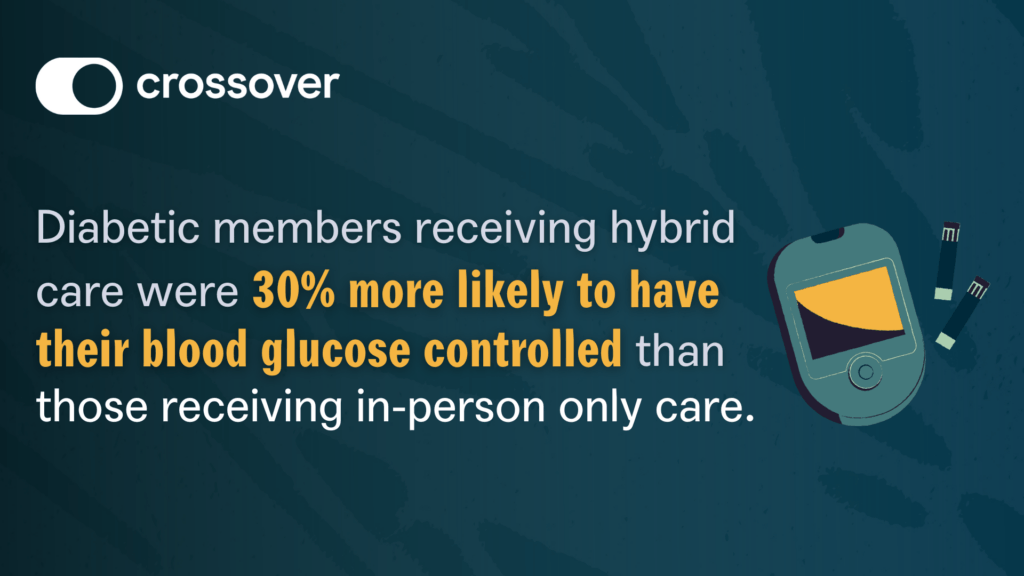
Blog
Driving Sustainable Health Outcomes with Virtual Primary Health
By Danna Chung, MD
As someone who has been on the frontlines of virtual care for the latter half of a decade, I’ve witnessed firsthand the integral role it has played in the evolution of healthcare delivery. In its first iteration, virtual care was presented as a new-aged solution to close access gaps and create efficiencies in the delivery of urgent episodic care. Today, accelerated by the needs imposed by COVID-19, virtual care is being applied in more comprehensive and sustainable healthcare settings. When delivered through an integrated, coordinated, member-focused care team, virtual primary care (VPC) offers new and promising opportunities to empower trusted patient-provider relationships and better manage health outcomes.
In this evolution of virtual care, it’s important to recognize that meaningful outcomes in VPC cannot be achieved through the old episodic practices of traditional telehealth providers, whose models were built around on-demand urgent care. These virtual care models were designed to serve a transactional need by offering quick triage or access to a prescription and not necessarily to facilitate meaningful patient relationships (or fulfilling experiences for doctors).
This is also true of some VPC models of the pandemic-era, which, in many instances, are just the old models (i.e. on demand, urgent care) recast as comprehensive primary care solutions; this may be why some have struggled with patient adoption. Another hurdle could be that some patients default to primary care only as an urgent care option. But for those patients who are seeking an ongoing relationship with a primary care provider, lingering questions remain regarding the quality of virtual versus in-person primary care.
Despite the benefits of access and efficiency, the big recurring question for many is: Can you do everything virtually? The answer is simply “no.” While a lot can be performed virtually, in order to meet the full needs of patients, the current systems in place must integrate virtual providers with in-person providers, ideally through a hybrid care model with embedded care navigation. The hybrid approach, inclusive of a designated, consistent care team that is fully integrated across modalities, ensures efficiency and continuity of care for optimal outcomes.
As medical students, we learn how important it is to evaluate the whole patient; how so much of our medical decision making will be based on history-taking alone, and how communication skills are critical to develop the physician-patient relationship – one that delivers the most value when rooted in trust. This is the sweet spot of Virtual Primary Health as offered by Crossover Health. It is built to enable enough time, to ask the right questions, to refer with the care team, and it covers the entire range from episodic to longitudinal care, including chronic care management, proactive outreach and screening.
This trusted relationship between patient and provider is made possible through a combination of asynchronous messaging and synchronous video care to allow for quick access and multiple touch points with less attrition. Empowering providers to look at the whole patient in an integrated fashion results in better population health management and overall efficiencies in care delivery.
To achieve optimal outcomes, VPC must be offered as part of an integrated, coordinated, member-focused team. At Crossover, our Virtual Primary Health offering goes a step beyond your average VPC model: it’s a hybrid care model inclusive of mental health, physical medicine, health coaching, and has embedded care navigation. Virtual Primary Health is closing gaps in care across specialties and its value is resonating with members. For instance, of our members with diabetes who received hybrid care, 30% were more likely to have glucose controlled than those who received in-person care.
Based on the impressive utilization of this longitudinal VPC model, its incredible impact on the patient journey, and ability to close care gaps, I’d advocate that the time is now for the industry to rethink the scope of virtual care in the primary care setting and recognize its transformative potential in improving healthcare outcomes when implemented as a comprehensive Virtual Primary Health solution. The evolution of VPC models today is foundational to establishing the outcomes-driven primary care offerings of tomorrow.
___
About the Author

Danna Chung, MD, is the Virtual Medical Director at Crossover Health. She is board certified in internal medicine, allergy/immunology and integrative/holistic medicine. She joined Crossover in 2019 with prior experience working for a number of telemedicine companies and at the US Department of Health and Human Services.